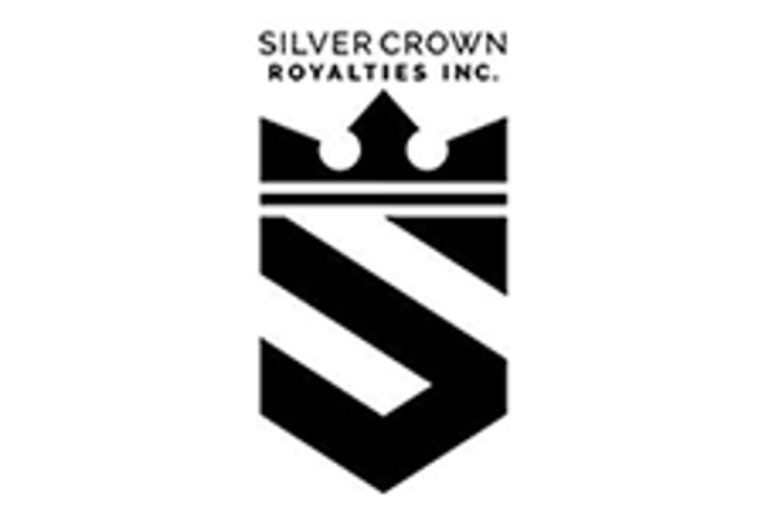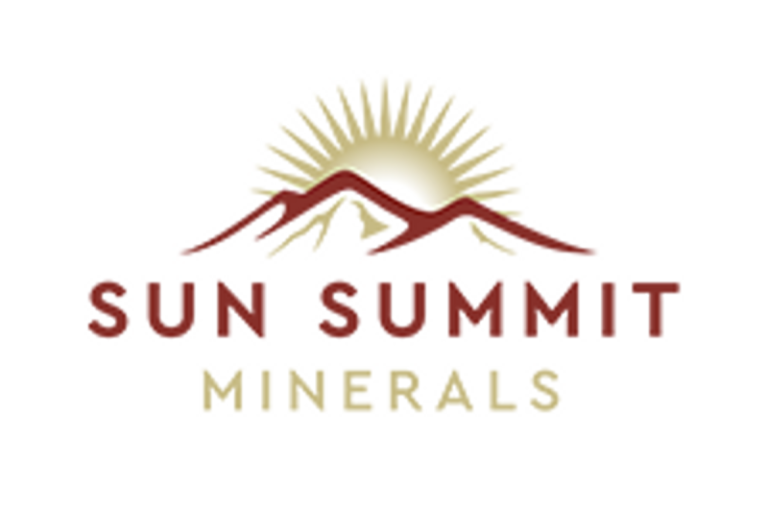Sun Summit Minerals Corp. (TSXV: SMN,OTC:SMREF) (OTCQB: SMREF) (‘Sun Summit’ or the ‘Company’) is pleased to provide an update from its ongoing project-wide exploration program at the JD Project, Toodoggone Mining District, north-central British Columbia (the ‘JD Project’). Drilling has now commenced with over 5,000 meters of drilling planned.
Highlights:
-
Drilling has now started: The drill rig is currently advancing the first hole on the northwestern extent of the Creek Zone. Up to 3,000 meters of drilling is planned at the Creek Zone designed to investigate the extent and continuity of near-surface, high-grade and bulk-tonnage gold mineralization. Historical and recent highlight intercepts include:
-
122.53 m of 2.11 g/t Au including 1.5 of 121.0 g/t Au (CZ-24-0047)
-
54.95 m of 2.69 g/t Au including 19.50 m of 7.31 g/t Au (CZ-24-0058)
-
22.0 m of 11.7 g/t Au including 4.0 m of 61.2 g/t Au (CZ97-0085)
-
Up to 2,000 meters of drilling planned at the Finn Zone to be completed following the Creek Zone drilling: Holes are designed to evaluate the extent and continuity of high-grade and bulk-tonnage gold mineralization. Historical highlight intercepts include:
-
35.7 m of 7.26 g/t Au including 1 m of 215.4 g/t Au (JD95-0472)
-
25.9 m of 6.42 g/t Au including 6.1 m of 12.8 g/t Au (JD94-0151)
-
22.0 m of 6.32 g/t Au including 12.6 m of 10.8 g/t Au (JD12-0033)
-
Project-wide exploration activities focused on drill target refinement are ongoing, including:
-
Over 20-line km of induced polarization (IP) geophysics has been completed along the JD Porphyry Trend.
-
Over 1,000 soil samples have now been collected across the Belle South grid, the southern extent of the JD Porphyry trend.
-
Geological mapping and prospecting are ongoing with a current focus on McClair Creek which transects the JD Porphyry Trend. Mapping has also been completed along the Finn to Creek Corridor as well as the Oxide Peak West target.
‘It’s exciting to see the drill rig turning on the first hole of our fully funded $6 million exploration program,’ said Niel Marotta, CEO of Sun Summit Minerals. ‘This year’s campaign is focused on advancing and expanding the Creek and Finn gold-silver targets, while also generating and refining new priority targets across the JD Project. With several large regional programs underway in the northern Toodoggone, we expect a steady stream of news throughout the season, including drill results from our own aggressive 5,000 metre program.’
JD Exploration Program
The primary exploration goals at the JD Project are to advance and expand the Creek and Finn gold-silver targets and to generate and refine new priority targets across the project. Work is currently focused on the highly prospective 4.5 km long epithermal-related Finn to Creek corridor, as well as the 12 km long JD Porphyry trend (Figure 2).
Drilling update: Drilling has now commenced with the rig advancing the first hole of the program at the Creek Zone. Up to 3,000 meters of drilling is planned at the Creek Zone with holes designed to investigate the extent and continuity of near-surface, high-grade and bulk-tonnage gold mineralization (e.g., 122.53 m of 2.11 g/t Au including 1.5 of 121.0 g/t Au in CZ-24-0047 and 22.0 m of 11.7 g/t Au including 4.0 m of 61.2 g/t Au in CZ97-0085, Figure 3). Following completion of the Creek Zone holes, the drill rig will move to the Finn zone where up to 2,000 meters of drilling is planned with holes designed to evaluate the extent and continuity of near-surface high-grade and bulk-tonnage gold mineralization (Figure 4).
Target generation update: Project-wide exploration activities aimed at target generation and drill target refinement are ongoing, including:
- Over 20-line km of induced polarization (IP) geophysical surveying has been completed along the JD Porphyry trend east of the Finn Zone. Additional surveying is planned across parts of the Finn to Creek corridor to infill historical gaps.
- Over 1,000 soil samples have now been collected across the Belle South grid, southern extent of the porphyry trend (Figure 2). Once complete, sampling will continue across the Kadah grid which covers a highly prospective area south of the Finn to Creek corridor lacking historical soil coverage.
- Geological mapping and prospecting are ongoing with a current focus on McClair Creek which transects the JD Porphyry trend. Mapping has also been completed along the Finn to Creek corridor as well as the Oxide Peak West target. Mapping will continue east towards the East McClair target (Figure 2).
Timeline: Drilling and complementary exploration activities are anticipated to continue into September.
Figure 1.Map of the Toodoggone District showing the location of the JD Project in relation to other development and exploration projects. Data sourced from Thesis, TDG and Centerra’s corporate websites.
To view an enhanced version of this graphic, please visit:
https://images.newsfilecorp.com/files/6142/258684_8e19fa8484293969_001full.jpg
Figure 2. Map of the JD Project showing the broad JD Porphyry trend and the epithermal-related Finn to Creek Corridor. Planned areas for IP and soil surveys are shown in grey. Key targets are highlighted.
To view an enhanced version of this graphic, please visit:
https://images.newsfilecorp.com/files/6142/258684_8e19fa8484293969_002full.jpg
Figure 3. Map of the Creek Zone showing drill collar locations with selected highlights. The area targeted for 2025 drilling is outlined in red. See references below for data sources.
To view an enhanced version of this graphic, please visit:
https://images.newsfilecorp.com/files/6142/258684_8e19fa8484293969_003full.jpg
Figure 4.Map of the Finn Zone showing historical drill collar locations with selected highlights. The area targeted for 2025 drilling is outlined in red. See references below for data sources.
To view an enhanced version of this graphic, please visit:
https://images.newsfilecorp.com/files/6142/258684_8e19fa8484293969_004full.jpg
National Instrument 43-101 Disclosure and Disclaimer
This news release has been reviewed and approved by Sun Summit’s Vice President Exploration, Ken MacDonald, P. Geo., a ‘Qualified Person’ as defined in National Instrument 43-101 Standards of Disclosure for Mineral Projects of the Canadian Securities Administrators. Some technical information contained in this release is historical in nature and has been compiled from public sources believed to be accurate. The historical technical information has not been verified by Sun Summit and may in some instances be unverifiable dependent on the existence of historical drill core and grab samples. Historical results are no indication of future results.
Community Engagement
Sun Summit is engaging with First Nations on whose territory our projects are located and is discussing their interests and identifying contract and work opportunities, as well as opportunities to support community initiatives. The Company looks forward to continuing to work with local and regional First Nations with ongoing exploration.
About the JD Project
The JD Project is located in the Toodoggone mining district in north-central British Columbia, a highly prospective deposit-rich mineral trend. The project covers an area of over 15,000 hectares and is in close proximity to active exploration and development projects, such as Thesis Gold’s Lawyers and Ranch projects, TDG Gold’s Baker-Shasta projects, Amarc Resources’ AuRORA project, Centerra Gold’s Kemess East and Underground projects, as well as the past-producing Kemess open pit copper-gold mine.
The project is 450 kilometres northwest of the city of Prince George, and 25 kilometres north of the Sturdee airstrip. It is proximal to existing infrastructure in place to support the past-producing Kemess mine, including roads and a hydroelectric power line.
The JD Project is in a favourable geological environment characterized by both high-grade epithermal gold and silver mineralization, as well as porphyry-related copper and gold mineralization. Some historical exploration, including drilling, geochemistry and geophysics, has been carried out on the property, however the project area is largely underexplored.
About Sun Summit
Sun Summit Minerals (TSX-V: SMN; OTCQB: SMREF) is a mineral exploration company focused on the discovery, expansion and advancement of district scale gold and copper assets in British Columbia. The Company’s diverse portfolio includes the JD and Theory projects in the Toodoggone region of north-central B.C., and the Buck Project in central B.C.
Further details are available at www.sunsummitminerals.com.
References
-
Hawkins, P.A. (1998), 1997 Exploration Report on the Creek Zone for Antares Mining and Exploration Corporation and AGC Americas Gold Corporation, JD Property, Toodoggone River Area, Omineca Mining Division, Internal Report #98-065-1.
Link to Figures
Figure 1: https://wp-sunsummitminerals-2024.s3.ca-central-1.amazonaws.com/media/2025/06/SMN_JD_Plans_20250618_Fig-1.jpg
Figure 2: https://wp-sunsummitminerals-2024.s3.ca-central-1.amazonaws.com/media/2025/06/SMN_JD_Plans_20250618_Fig-2-scaled.jpg
Figure 3: https://wp-sunsummitminerals-2024.s3.ca-central-1.amazonaws.com/media/2025/06/SMN_JD_Plans_20250618_Fig-3-scaled.jpg
Figure 4: https://wp-sunsummitminerals-2024.s3.ca-central-1.amazonaws.com/media/2025/06/SMN_JD_Plans_20250618_Fig-4-scaled.jpg
On behalf of the board of directors
Niel Marotta
Chief Executive Officer & Director
info@sunsummitminerals.com
For further information, contact:
Matthew Benedetto, Simone Capital
mbenedetto@simonecapital.ca
Tel. 416-817-1226
Forward-Looking Information
Statements contained in this news release that are not historical facts may be forward-looking statements, which involve risks, uncertainties and other factors that could cause actual results to differ materially from those expressed or implied by such forward-looking statements. In addition, the forward-looking statements require management to make assumptions and are subject to inherent risks and uncertainties. There is significant risk that the forward-looking statements will not prove to be accurate, that the management’s assumptions may not be correct and that actual results may differ materially from such forward-looking statements. Accordingly, readers should not place undue reliance on the forward-looking statements. Generally forward-looking statements can be identified by the use of terminology such as ‘anticipate’, ‘will’, ‘expect’, ‘may’, ‘continue’, ‘could’, ‘estimate’, ‘forecast’, ‘plan’, ‘potential’ and similar expressions. Forward-looking statements contained in this news release may include, but are not limited to the size and scope of the drill program at the JD Project; the Company’s exploration plans, forecasts and timing of said plans; and the potential for positive findings, if any, from the drill program. These forward-looking statements are based on a number of assumptions which may prove to be incorrect which, without limiting the generality of the following, include: the Company’s ability to complete the drill program as currently contemplated; risks inherent in exploration activities; the ability of the Company to find and verify any mineralization; volatility and sensitivity to market prices; fluctuations in metal prices. The forward-looking statements contained in this news release are made as of the date hereof or the dates specifically referenced in this news release, where applicable. Except as required by applicable securities laws and regulation, Sun Summit disclaims any intention or obligation to update or revise any forward-looking statement, whether as a result of new information, future events or otherwise, except as required by applicable securities laws. All forward-looking statements contained in this news release are expressly qualified by this cautionary statement. Further details about the risks applicable to the Company are contained in the Company’s public filings available on SEDAR+ (www.sedarplus.ca), under the Company’s profile.
Neither the TSX Venture Exchange (the ‘TSXV‘) nor its Regulation Services Provider (as that term is defined in the policies of the TSXV) accepts responsibility for the adequacy or accuracy of this release.
To view the source version of this press release, please visit https://www.newsfilecorp.com/release/258684










